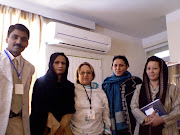Afghanistan my be passing through a critically testing military stage presently but what is disconcerting is that there seems to be an inspired campaign underway in the Western media and think- thanks to project that strategic fatigue has set-in in the United States and NATO policy establishments. Such projections would lead one to believe that the United States/NATO combine is exploring exit strategies from Afghanistan.
Available indicators suggest that while strategic fatigue may have set-in in some NATO participants in Afghanistan due to domestic pressures, the same cannot be said of the United States.
United States military operations in recent times have acquired added vigor after a review of United States operational strategy this year. The year 2008 marks the final denouement in United States – Pakistan military coalition (so-called) against global terror. While strategic analysts, including this Author, were constantly pointing out that Pakistan was double-timing the United States all along, it took the United States policy establishment six years to finally recognize it.
In fact what we are witnessing today in Afghanistan is not an Afghan civil war but a puny state like Pakistan (its nuclear weapons notwithstanding) challenging the military might of the global only superpower, namely the United States, through asymmetric war through its proxy insurgent outfit – the Taliban.
The aim of United States military intervention in Afghanistan in 2001-2002 was to evict the brutal medieval Islamic Jehadi regime from Kabul for its role in brutally converting Afghanistan into the Mecca of Islamic Jehad which acted as a magnet for the Al Qaeda and other terrorist groups from the Islamic world. At the time of its military intervention in Afghanistan, the United States was aware that Pakistan was criminally culpable for 9/11 events and the hosting of Taliban and Al Qaeda in Afghanistan. The United States ignored all that and finds itself in the present strategic quagmire that Pakistan’s treachery generated for USA.
Post-9/11 and up till now, Pakistan nurtured and regrouped the Taliban within Pakistan hoping that with strategic fatigue eventually creeping in US-NATO combine the Taliban could be used once again as an instrument of its strategic objective to enslave Afghanistan.
The armed conflict turbulence in Afghanistan today is a violent contest between the US-NATO combine to stabilize Afghanistan and the Taliban (with Pakistani support) attempting to regain control over tracts of territory in Southern Afghanistan, more specificall, before a final push to Kabul.
With the Taliban unable to make major strategic gains, an inspired campaign is underway, exploiting the gullibility of highly paid Western journalists in Kabul and also some Western think tanks and intellectuals to over-hype and over-sensationalize Taliban gains in Afghanistan and minimize the tactical successes of US-NATO military forces.
This inspired campaign has spawned in its wake some dangerous alternatives detrimental to United States strategic interests, namely to explore an exit strategy from Afghanistan and secondly to co-opt the Taliban in a dialogue with the Karzai Government with the ultimate aim of Taliban sharing political power in Kabul.
While the first dangerous alternative is not being seriously considered, the second dangerous alternative of dialogue with the Taliban has made some tentative gains with Afghan-Taliban dialogue in Saudi Arabia engineered by Pakistan and British intelligence agencies with a grudging nod by USA.
It is amazing and the height of strategic naivety for the United States to have given a nod to the second dangerous alternative by pressuring Afghan President Karzai for Afghan participation in a dialogue with the Taliban in Saudi Arabia.
Can it be forgotten that 9/11 would have never taken place had “The Other Axis of Evil” of Pakistan and Saudi Arabia were pre-empted by the United States from the creation of Taliban and ensconcing of Al Qaeda and Osama bin Laden in Afghanistan.
Can it also be forgotten that the inclusion of “moderate Taliban” in the Kabul Government in 2002 was mooted by Pakistan’s General Musharraf to ensure Pakistan’s hold in Kabul and was wisely rejected by USA. A Taliban has no shades; the Taliban are a fundamentalist Islamic armed insurgent militia believing in medieval brutality.
How come that the inclusion of the Taliban in an Afghan-Taliban political dialogue has been brought about? Reports indicate that this has been advocated by European countries, and particularly Britain.
The United States policy establishment should take this as a wake-up call and prevent such dangerous alternatives taking shape which are grossly in contradiction and capable if endangering United States global and regional strategic interests.
To highlight the dangers to US national security interests by advocacy of dangerous and defeatist alternatives, this Paper intends to examine the following perspectives:
- United States Strategic Interests in Afghanistan
- Taliban No Strategic Asset for United States
- Taliban is a Strategic Asset for Pakistan and Saudi Arabia
- Afghanistan is a Strategic Asset for United States and Not Pakistan
- Afghanistan Can be Reclaimed by United States as a Moderate, Democratic Islamic State
- US Intellectuals Must Disabuse Their Minds that Pakistan’s Sensitivities are Paramount in Solution of Afghanistan Conflict
United States Strategic Interests in Afghanistan
United States strategic Interests in Afghanistan should determine the centrality of all United States policies and strategies in the securement of Afghanistan as a stable state and its protection against Islamic fundamentalist onslaughts.
The United States when it entered Afghanistan in its military intervention and secured Kabul in 2002 with the assistance of Northern Alliance Forces had a two pronged strategy, namely (1) Regime change in Afghanistan by evicting the Taliban occupation of Afghanistan and (2) Dismantle the Islamic Jihadi terrorist infrastructure in Afghanistan of the Taliban and Al Qaeda.
The United States succeeded in both its strategic aims except that Pakistan pre-empted the capture of Taliban and Al Qaeda leadership and cadres by spiriting them away to sanctuaries within Pakistan, out of reach of US Forces.
In gross contradiction to US strategic aims the United States airlifted nearly 12,000 Pakistan Army operatives who provided the backbone of the Taliban from Kunduz away from retribution by Afghan tribesmen whom they had brutalized for nearly six years. This was a strategic blunder which is now costing heavily to the United States.
Notwithstanding the strategic blunders above, with the passage of time, United States strategic interests in Afghanistan today can be assessed as follows (1) Afghanistan’s emergence as a stable, democratic and moderate Islamic state contributing to regional stability (2) Afghanistan as a base for extension of American influence in Central Asia (3) Afghanistan as a possible springboard for neutralizing Iran (4) Afghanistan as a base for any future neutralization of Pakistan’s nuclear arsenal (5) In any future confrontation with China, Afghanistan’s territory touching China and Afghan air bases can be crucial pivots for US military operations.
The United States therefore must cultivate and craft a long term strategic vision to ensure its presence in Afghanistan coupled with transformation and build-up of Afghanistan as a stable nation immune to Pakistani and Taliban covetous designs.
Taliban No Strategic Asset for United States
The strong advocacy of those favoring entering into a political dialogue with the Taliban and their inclusion in political power-sharing in Kabul would have been logical and understandable had there been even a remotest chance that the Taliban could be transformed into a strategic interest for the United States. The picture, however, is otherwise.
The Taliban are mercenary free-booters with no stake in the stability of Afghanistan. The Taliban are a creation and an instrument of the Pakistan Army tasked with the forcible subjugation of Afghanistan as a client state of Pakistan. Their operational strategies are pronouncedly medieval Islamic brutalism which is alien to the Afghan psyche
With such credentials the Taliban hardly qualify to be a strategic asset for the United States in any future US plans for Afghanistan. More frankly, the Taliban are the very anti-thesis of whatever the United States stands for in Afghanistan and their cooption would be an insult to all US-NATO lives lost in Afghanistan in defense of democracy and freedom.
Taliban is a Strategic Asset for Pakistan and Saudi Arabia
As a follow-up of the above, the United States needs to recognize that the Taliban and Al Qaeda were strategic assets of the “Other Axis of Evil” namely Pakistan and Saudi Arabia. Both were instrumental in spawning the Taliban and Al Qaeda in Afghanistan and for 9/11 too. Please refer to the Author's Paper No. 548 dated 12/11/2002 entitled "United State and the Other Axis of Evil".
The above position continues today. Pakistan ensconced the Afghan Taliban hierarchy and the Taliban Shura under direct protection of the Pakistan Army in Quetta where it continues untouched till today. Surprisingly, the United States which has now become active in attacking Pakistani Taliban and Al Qaeda hide-outs within Pakistan in FATA has not touched Quetta where Mullah Omar and the Afghan Taliban are housed and from where all Taliban major operations in Southern Afghanistan are launched from.
Pakistan’s obsession with Afghan Taliban persists became it still remains as the only instrument to ensure Afghanistan’s subjugation as a client state of Pakistan subservient to its Pakistani strategic designs.
It needs to be recorded that Pakistan views the Pakistani Taliban as a threat to its security, but views and nurtures the Afghan Taliban as a strategic asset to be used for forcing the exit of USA from Afghanistan.
Is it not diabolical that the Pak-Saudi-sponsored Afghan-Taliban dialogue in Saudi Arabia should have the notorious Mujahideen leaders like Haqqani and Hekmatyar present there the same time? It does not augur well for the United States.
Saudi Arabia’s interest in the Taliban associated with the Al Qaeda as a strategic asset has been re-invented. In the words of Fareed Zakaria, Editor of News week: “Bin Laden began his struggle hoping to topple the Saudi regime. He is now aligned with the Saudi monarchy as it organizes against Shiite domination.”
Can it be over-looked that today Pakistan and Saudi Arabia are more closer to China than the United States. Can it be overlooked that both also are not on the best of terms with Iran.
Both Pakistan and Saudi Arabia have plans to use the Afghan Taliban and Al Qaeda in their future strategic blueprints. Convergence exists again between Pakistan and Saudi Arabia to place a Taliban Government in Kabul.
Afghanistan is a Strategic Asset for Untied States and Not Pakistan
The United States today is at strategic cross-roads in Greater South West Asia. It has a stark choice in deciding what are going to be its priorities in the region.
Pakistan is once again headed for state failure or worse state-disintegration as a result of its internal contradictions, exploiting Islamic Jehadi impulses as a foreign policy and strategic instrument and divisive tendencies within Pakistan.
Afghanistan on the other hand is reeling under a proxy jihadi onslaught launched not only against Afghanistan but also against United States-NATO combine intent on stabilizing Afghanistan. The Taliban are the proxies.
The United States therefore is confronted with a fateful choice, namely to save Pakistan or Afghanistan. The United States cannot save both as was argued in this Author’s SAAG Paper No. 2585 dated 13 Feb 2008 entitled "United States Fateful Choices: Save Afghanistan or Save Pakistan".
The major conclusion that was offered was that if USA chooses to save Afghanistan it has the chance of saving Pakistan as a follow-up. On the other hand if USA elects to save Pakistan at the cost of Afghanistan it could face the danger of losing both to disorder and fragmentation.
That Afghanistan is a prized strategic asset for the United States is even recognized by Pakistan. It is for nothing that Pakistan has persisted in the last six years to undermine the United States control of Afghanistan by utilizing the Taliban insurgency.
It is for nothing that Pakistan has audaciously dared to militarily challenge the United States as a global super- power through asymmetric warfare utilizing the Islamic fundamentalist Taliban insurgents. This is an ample indicator as to high the stakes are for Pakistan in Afghanistan.
A stabilized Afghanistan will share many strategic convergences with the United States. Pakistan if ever stabilized would never share any strategic convergences with the United States and moreso now with a growing US-India strategic partnership and its strategic alliance with China.
The new bogey raised by Pakistan Army against the United States is that it is intent on circumcising the only nuclear weapons arsenal in the Islamic world with the clandestine assistance of Israel. The United States is painted as a Christian power at war with the Islamic World.
It is amazing therefore as to how US intellectuals and strategic analysts discover strategic convergences with Pakistan where all indicators indicate otherwise.
Afghanistan Can be Reclaimed by United States as a Moderate, Democratic Islamic State
American analysts overlook many of the following indicators which suggest that Afghanistan can be reclaimed by the United States as a stable moderate, democratic Islamic state (1) The Afghan people are not anti-American like those in Pakistan (2) The Afghan people especially the Northern Alliance assisted and facilitated the
Taliban regime change by the United States (3) Following displacement of Taliban from Afghanistan there were no large-scale uprisings by Afghans against the United States (4) Afghan people took part in democratic elections to elect US-favored President Karzai (5) The Taliban has had limited successes in Afghanistan only in areas where US-NATO military presence in scarce. The major deduction here being that the Afghan people do not favor the Taliban.
More importantly, Northern and Western Afghanistan distantly located from Pakistan are relatively more peaceful, stabilized and have developed in the last six years. Southern Afghanistan was always troubled and become more troubled in the last six years as in the initial years after 2002, the United States militarily neglected it in the vain hope that Pakistan Army would play its part in controlling the Taliban on its behalf in this region. Pakistan however treacherously did otherwise.
In the last six years of US-NATO assisted Karzai regime, appreciable progress and reconstruction has taken place including in the social sectors like Afghan women emerging once again in the liberal mould.
Afghanistan and the Afghan people are ready to assist the United State to stabilize Afghanistan and re-build it into a progressive state, only if the United States does not display weakening of resolve in this direction and stops exploring dangerous alternatives like exit strategies and dialogue with the much Afghan-hated Taliban. The Afghan people look to USA for steely resolve in eliminating the Taliban threat to Afghanistan.
US Intellectuals Must Disabuse Their Minds that Pakistan’s Sensitivities are Paramount in Solution of Afghanistan Conflict
This Author has argued in earlier Papers on Afghanistan that the most glaring contributory failure of United States policy and strategies in Afghanistan was due to (1) Linkage of US policies in Afghanistan with Pakistan (2) Over-importance given to Pakistan’s sensitivities over Afghanistan (3) Over reliance on Pakistan by United States for intelligence and logistics support.
Sadly, this trend still persists as if the United States would collapse in Afghanistan without Pakistan. This trend has led to the acceptance of a dialogue with Taliban in Saudi Arabia. This trend leads to avoidable pressures, at times counter productive in Indian’s eyes that India must give concessions to Pakistan on Kashmir and keep the peace process going Suggestion keep surfacing that Afghanistan must not cozy up to India in deference to Palestinian sensitivities.
Similarly, there are pressures on President Karzai to recognize the Durand Line and talk with the Taliban.
All this talk is utterly ridiculous and especially when it comes from personages who have held important official positions in the US establishment.
Illustrative of this line of thought and which persists till today was a joint articles by Karl Inderfurth former US Assistant Secretary of State and Dennis Kux former US diplomat in the Baltimore Sun in December 2006. Main points made were
- USA and key allies should prevail over Afghanistan to recognize the Durand Line.
- Urged Washington to use influence with Karzai Government “to take greater account of Islamabad sensitivities in dealing with India”.
- “Even though India continues to provide generous economic assistance to Afghanistan, Kabul would be wise to address Pakistani concerns”.
Such wise men should have recommended otherwise, namely (1) USA should liquidate the Taliban from Quetta and its surroundings (2) US aid should be conditional on the same (3) US will militarily intervene in Pakistan to achieve the foregoing if Taliban continues to operate from Quetta and elsewhere (4) US will not enter into any dialogue with Taliban and nor will the Karzai regime.
In this connection one would like to quote the remarks of the Australian Defense Minister Fitzgibbon who was quoted in ‘The Australia’ December 17, 2007 that while NATO had been successfully “stomping on lots of ants, we have not been dealing with the ant’s nests”.
Need it be said that the ant’s nests are in Quetta area of Pakistan and it is only the Al Qaeda and Pakistani Taliban that are in FATA. Quetta Taliban are the major threat to Afghanistan.
Concluding Observations
Afghanistan is a prized strategic asset by virtue of its geo-political setting adjoining West Asia, Central Asia, China and South Asia. It is also of great strategic value to Russia.
With such a strategic setting it would be strategically disastrous for the United States to forego its strategic and political gains of the last six years in Afghanistan just to humour Pakistani sensitivities.
The United States must recognize that Pakistan aided by Saudi Arabia and with the tacit support of China, is the root of all strategic turbulence that afflicts Afghanistan. Pakistan therefore cannot be the part of the solution to stabilize Afghanistan.
The United States can only stabilize Afghanistan if America’s Afghan policies are delinked from Pakistan and America warns Pakistan of retribution if it persists in disruptive policies in Afghanistan through proxy use of the Taliban.












No comments:
Post a Comment